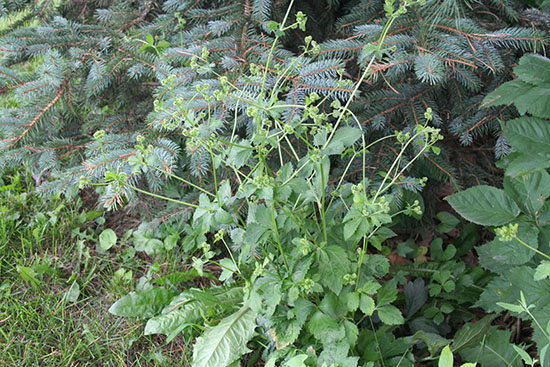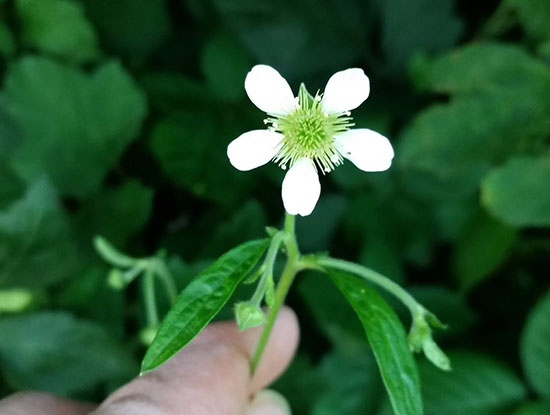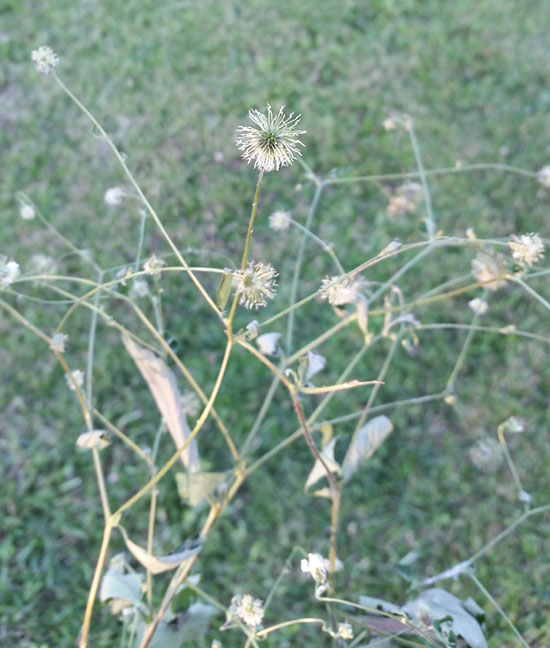Issue 10, July 2, 2018
Lesser Known Weeds: White Avens
White Avens (Geum canadense) is a perennial plant of woodland and other shady areas. Some would argue this plant is not a weed at all. However, in the perfect growing conditions, this plant can take over the area somewhat quickly. I have personal experience with and others have shared similar experiences over the years. With that said, White Avens is often a desirable plant. In fact, it is not included in any of my basic weed ID books, but it is included rather in a few of my wildflower guides. It can occasionally be found in lawns (including my own). Every year I get asked about this lesser known plant.

White avens leaves.
Mature plants can reach a height of 12-36 inches. Growth begins as a rosette in the spring for this member of the rose family. Basal leaves are long-stalked and compound. They have 1 or 3 large, terminal leaflets with several small leaflets along the stalk. The leaves are typically lobed with rounded teeth at the margins. The leaves along the upright stems are mostly palmately compound in 3's, somewhat resembling the leaves of strawberry. The stems are smooth to slightly hairy. The leaf veins are distinctly white towards the center (almost frosted in appearance) while the underside of the leaf is purple. The flowers have 5 bright white petals which are interspersed with green sepals. The flowers are small at only about ½ inch wide. They typically occur during the summer. Seed heads are bur-like with hooked tips, which can attach easily to animal fur or clothing. The underground portion of White Avens consists of a taproot and rhizomes, which help to develop colonies of this plant.

White avens plant.
A few similar species exist in Illinois including Rough Avens, which has less showy flowers with much shorter petals than sepals. It also has hairy stems. Pale Avens has cream colored flowers, rather than white. Ornamental Geums can be found in garden centers with showy, bright orange flowers. Ironically, I purchased one but could not keep it alive. I can grow White Avens a little too easily however.

White avens flower.
White Avens can be a nice addition in a shady spot. But sometimes you can have too much of a good thing and control is then necessary. Unwanted plants can be dug out. Hand pulling can be used, but mature plant stems can easily break off at the soil so have a shovel ready or be prepared to revisit the site another day. A postemergent herbicide such as glyphosate or triclopyr could be tried on young actively growing plants. Keep in mind that glyphosate is nonselective and should be used as a spot treatment. Be sure to carefully read and follow all label directions. For landscapes, planting a more desirable species to provide competition with White Avens may be useful.

White avens seed head.
For more information, check out: http://www.illinoiswildflowers.info/savanna/plants/white_avens.htm (Michelle Wiesbrook)
Author:
Michelle Wiesbrook